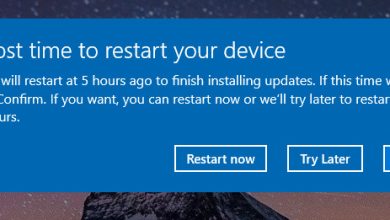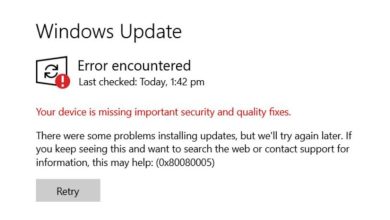How to fix Windows Update error 0x8007065e on Windows?
You may have encountered this error while updating your Windows to the newest version. This error can be caused by many reasons, such as corrupted Windows update files and not running the essential Windows update services required to install the Windows update successfully. Usually, these are the reasons behind the failure of a Windows update. However, if the following methods do not help fix this issue, you can try installing the Windows update manually.
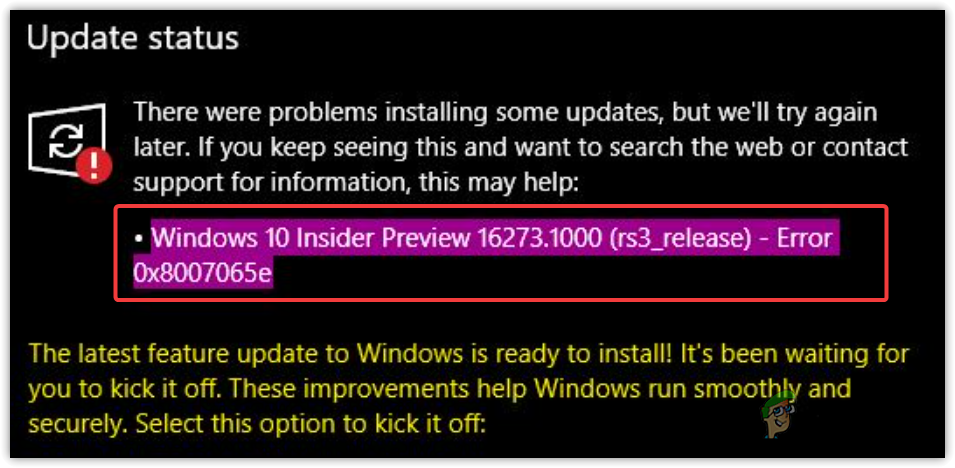
| Issue | Windows Update error 0x8007065e |
| Reported On | Windows 7, 8, 10 and 11 |
| Causes | Corrupted Software Distribution Folder Stopped Windows Update Services Interference of third party antivirus Corrupt System Files and Windows Images |
| Solutions | Rebuild Software Distribution Folder Restart Windows Update Services Download Windows Update Manually Disable Thrid-Party Antivirus |
1. Rename Software Distribution and Catroot2 folder
This error often occurs when the Windows update files stored in the software distribution folder are corrupted and cannot be utilized by Windows to install the update. So, in this case, you will have to rename the software distribution folder, which creates a new software distribution folder with new content. The old software distribution folder will become useless as it was renamed.
The Catroot folder2 is also known as a Windows update folder, like the software distribution folder. When you rename the Catroot2 folder, a new folder will create with the new content and the same name. This process will make the Catroot folder2 unusable, which might fix your issue. Follow the steps to rename the Software Distribution folder and Catroot folder.
- Click Start Menu and type Command Prompt.
- Right-click the command prompt and select Run as administrator to open the terminal in administrator mode.
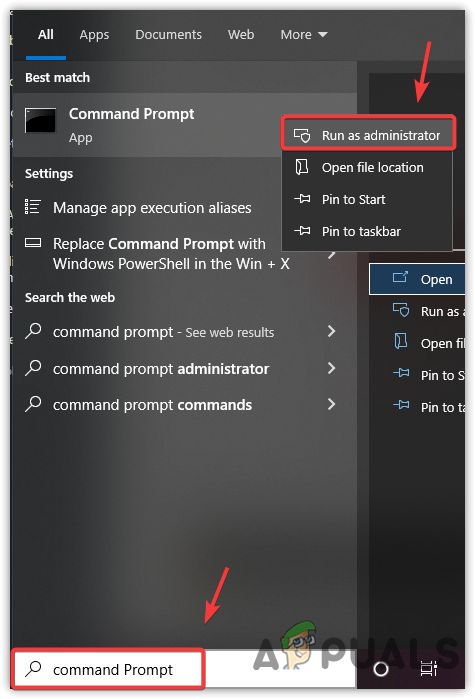
Opening Command Prompt in administrator mode - Once you open the command prompt as administrator, enter the following commands to stop the Windows update services.
net stop wuauserv net stop cryptSvc net stop bits net stop msiserver

Stopping Windows Update services - Then, enter the following commands to rename the Software Distribution and Catroot2 folders.
Ren C:\Windows\SoftwareDistribution SoftwareDistribution.old Ren C:\Windows\System32\catroot2 Catroot2.old
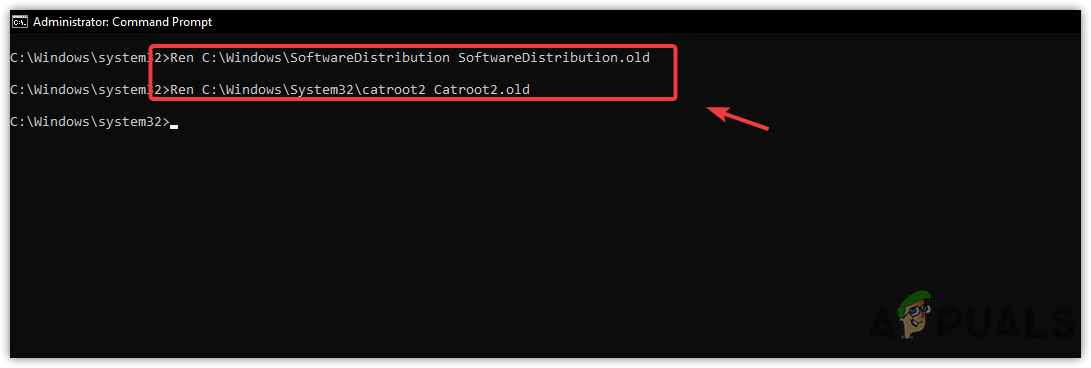
Renaming Software Distribution and Catroot2 folder - Once done, now start the Windows update services by entering the following commands.
net start wuauserv net start cryptSvc net start bits net start msiserver
- After that, type one more command to force update your Windows.
wuauclt.exe /updatenow
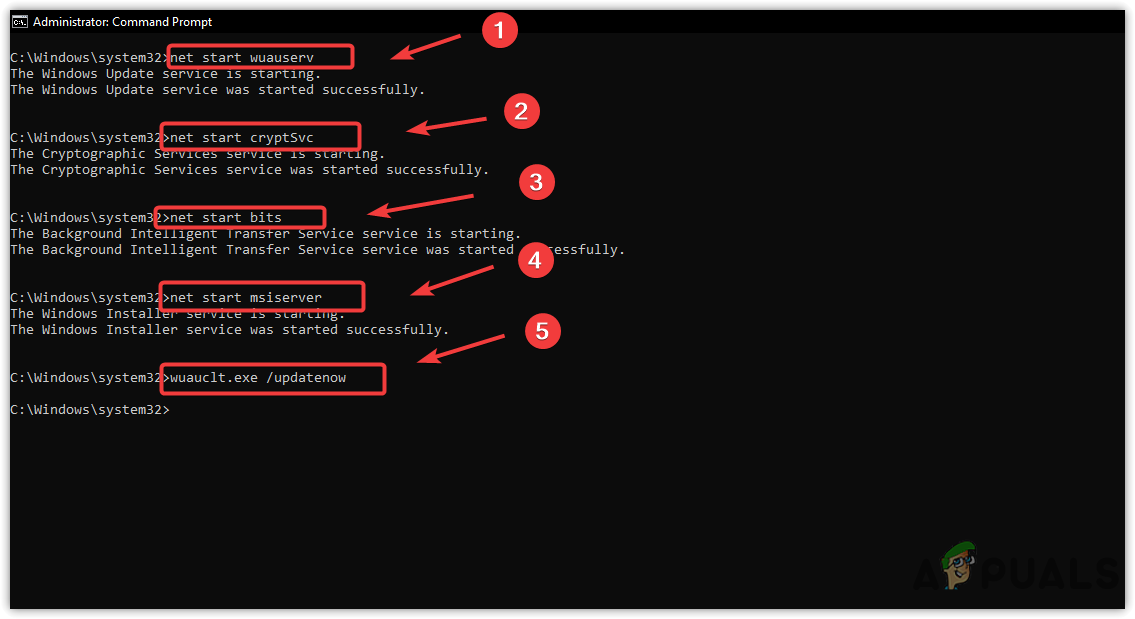
Starting Windows Update services - Once done, restart your computer to update Windows, and the issue should be fixed. If not, continue with the following methods.
2. Update your Windows using Windows Update Assistant
You can also try installing the Windows update using the Windows Update Assistant. It is a tool developed by Microsoft to update Windows automatically. Usually, when we encounter a Windows update error while installing a feature update, the best way to avoid the error is to install the Windows update with an automatic tool or download and install the Windows update from the Microsoft catalog. Both methods can help you to fix this issue. To update the Windows using Windows Update Assistant, follow the steps:
- Download the Windows Update Assistant.

Downloading Windows Update Assistant - Once the downloading is done, open it, and if the tool offers you to update your Windows, click Update Now.
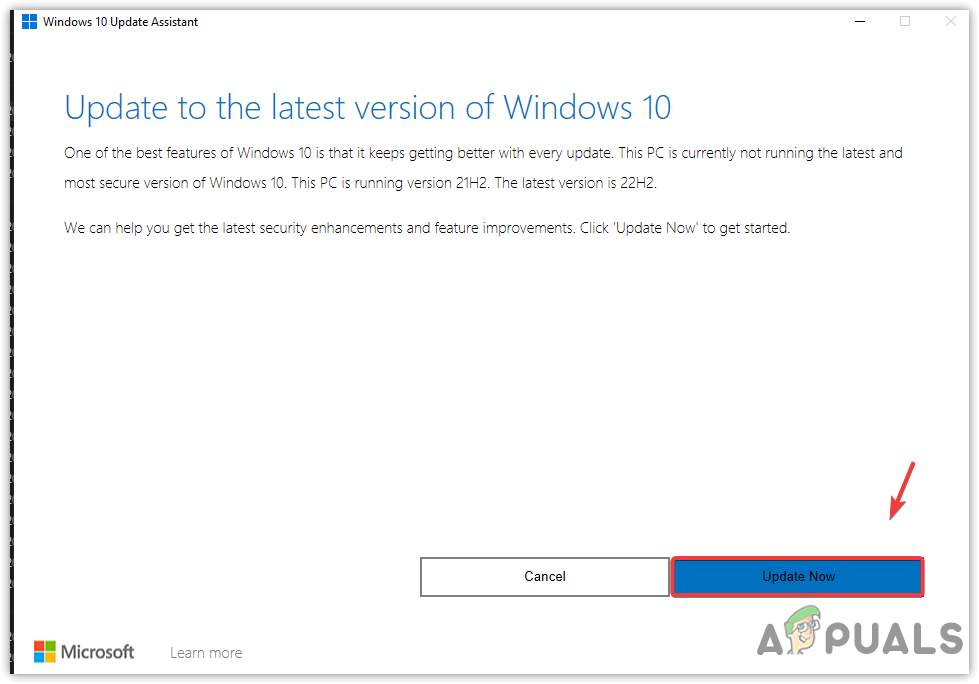
Updating Windows - After that, it will check your system requirements, and if your PC can meet the update requirement, it will start updating your Windows.
- Once done, your computer will restart to update the Windows, and the issue will be gone.
3. Run Windows Update troubleshooter
If the error is not fixed yet, you can try running the Windows update troubleshooter, which often fixes the errors related to Windows updates. The Windows update troubleshooter restarts the Windows update services and checks the registry files to eliminate the problems causing issues. Therefore, follow the steps to run the Windows update troubleshooter:
- Click Start Menu and search for troubleshooting settings.
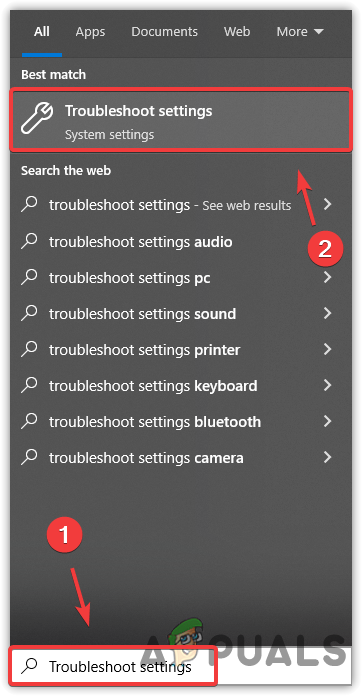
Opening Troubleshooting Settings - Open the troubleshooting settings and click Additional troubleshooter.
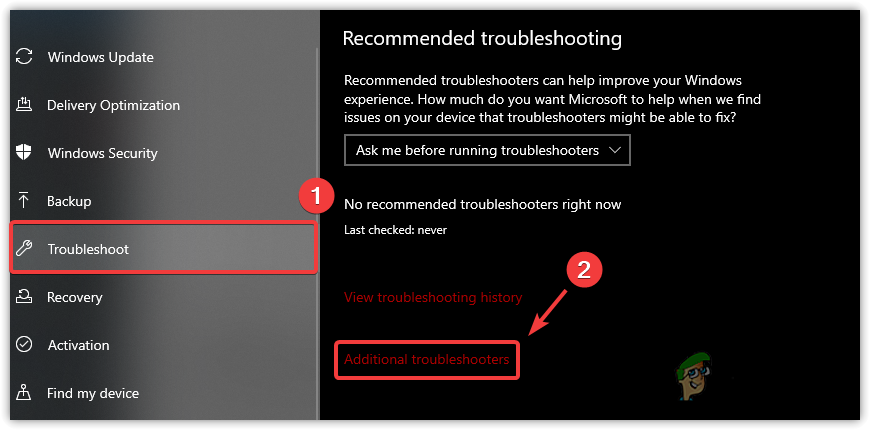
Navigating to Additional Troubleshooters - Select the Windows Update and click Run the troubleshooter.

Running Windows Update troubleshooter. - If it shows the problem and allows you to fix it, click on the Fix button. Otherwise, close the troubleshooter and move on to the other methods.
4. Enable Windows update services to start automatically
Windows update services are very important as they play a major role in delivering Windows updates successfully. If they are set to manual or disabled, you might encounter this error. So it is better to set the Windows update services to run automatically. You can follow the steps to configure the Windows update services to start automatically:
- Press the Win key and enter Command Prompt.
- Select Run as administrator from the given options.

Launching Command Prompt as administrator - Once it is opened, paste the following command one by one to set the services to start automatically.
SC config cryptsvc start= auto SC config trustedinstaller start= auto SC config wuauserv start= auto
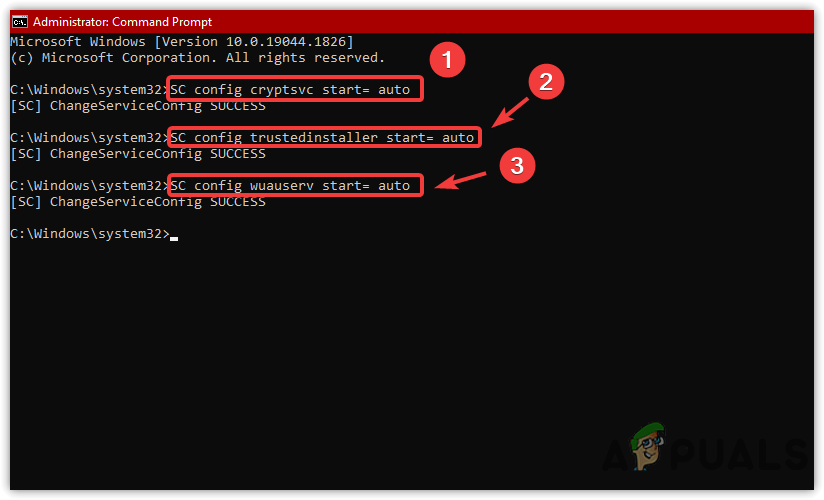
Once done, restart your computer and check if the 0x8007065e error is fixed.
5. Disable third-party antivirus software
If you have any third-party antivirus software enabled, it is advised to disable it temporarily, as it can interfere and prevent you from installing the Windows update.
We have given the instructions; follow them to disable the third-party antivirus, but if you are using any other antivirus software, the following steps might help:
- Right-click your antivirus software icon from the system tray.
- Hover the mouse on the name of your antivirus or the option similar to disable antivirus.
- Select Disable for 10 minutes, then try updating your Windows to see if the issue is fixed.
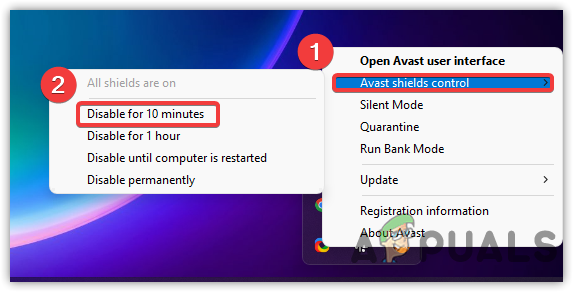
Disabling third-party antivirus
6. Run DISM and SFC
If your Windows system files are corrupted or damaged, you might encounter this issue. Repairing the integrity of system files fixes most of the Windows update errors. Therefore, try running the built-in DISM and SFC commands utility to repair and restore the Windows system files and components as follows.
- Click Start Menu and type the command prompt.
- Right-click on it to select Run as administrator.
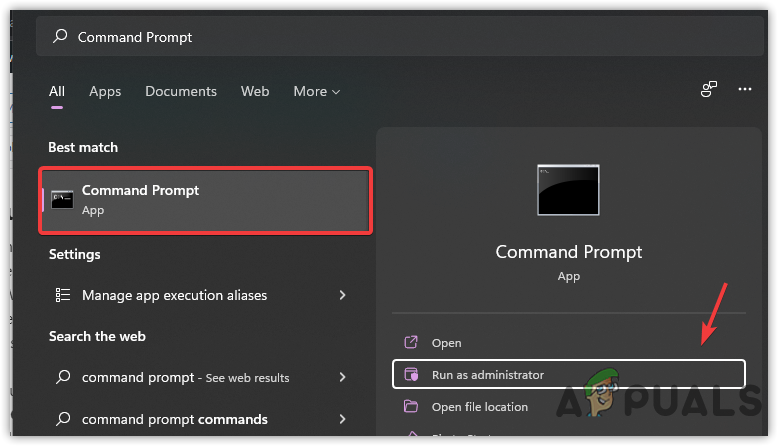
Running Command Prompt as administrator mode. - After that, type the following commands to repair and restore the system files.
sfc /scannow DISM /Online /Cleanup-Image /RestoreHealth
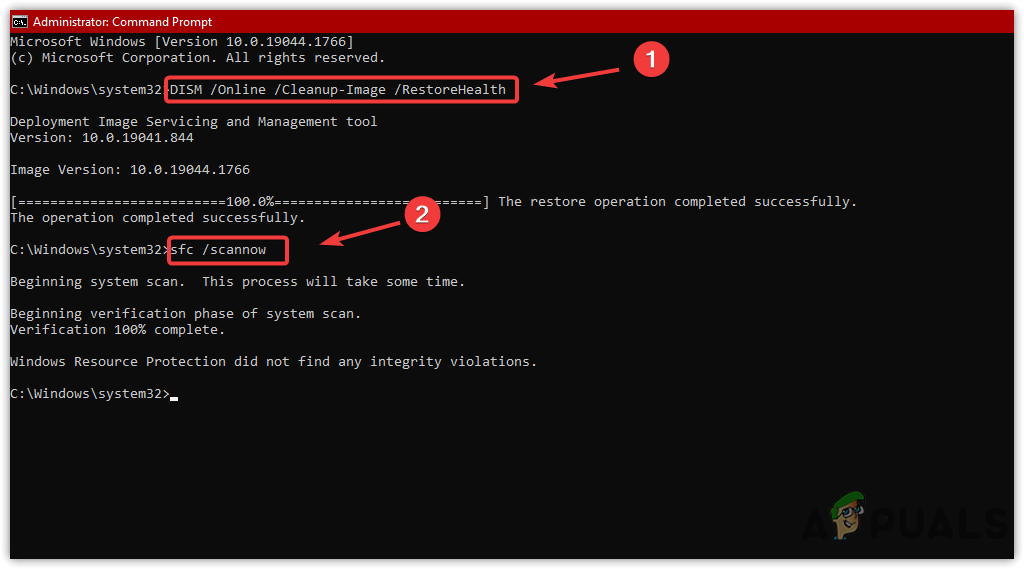
Executing SFC and DISM commands - Once the verification is done, close the terminal and update your Windows to see if the 0x8007065e error is fixed.
7. Download Windows Update from Microsoft Catalog
If none of the methods have worked for you, you can finally download the Windows update manually from the Microsoft Catalog and then install it on your Windows. Follow the steps to download and install the update:
- Go to the Microsoft Catalog website.
- Search for your Windows update that is causing the error.
- Once you find the update, click the Download button on the right-hand side.

Downloading Windows update from Microsoft Catalog - A short Windows will appear with the download link; click on it to download the update.
Note: Make sure to download the update according to your Windows architecture. - Once the update is finished downloading, double-click on it and install it on your computer.
- Once done, now you should have the latest Windows update installed. You can check it by navigating to Windows update settings > View Update history.

